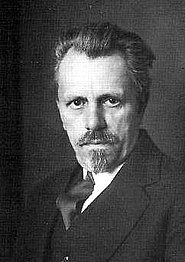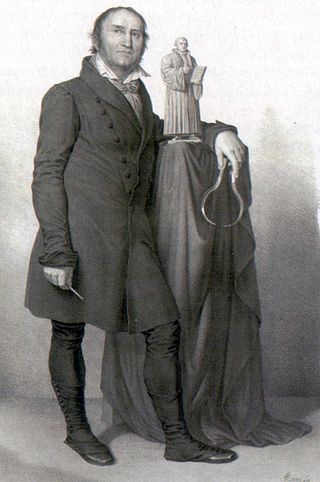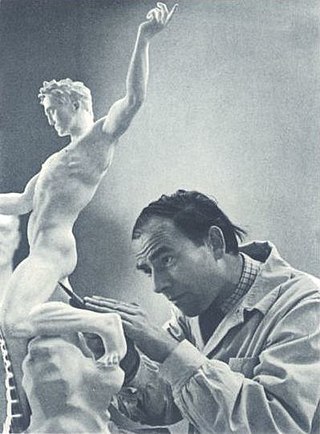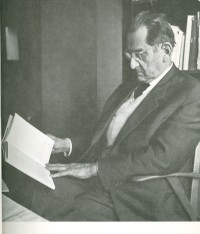
(date unknown)
Arthur Lewin-Funcke, originally Arthur Levin (9 November 1866, Dresden - 16 October 1937, Berlin) was a German sculptor and medallist. Lewin was his father's name, and Funcke his mother's maiden name.

Arthur Lewin-Funcke, originally Arthur Levin (9 November 1866, Dresden - 16 October 1937, Berlin) was a German sculptor and medallist. Lewin was his father's name, and Funcke his mother's maiden name.

After completing an apprenticeship as an ivory carver, he attended the Handwerkerschule (arts & crafts school) in Berlin. From 1890 to 1895, he studied at the Prussian Academy of Arts with Ernst Herter, Gerhard Janensch and Albert Wolff, among others. From 1895 to 1897, he lived and worked at the Villa Strohl-Fern in Rome, then went to the Académie Julian in Paris to complete his studies with Denys Puech. It was then that he began officially calling himself "Lewin-Funcke"; feeling that Levin was too common.
In 1901, he founded the Studienateliers für Malerei und Plastik (painting and sculpture school) in Berlin. He had many students who became well known, including Paul Citroen, David Friedmann , Charles Hug, Käthe and Peter Kollwitz and Felix Nussbaum. [1] In 1903, he married Eva Elisabeth Poenitz, a daughter of the composer, Franz Poenitz . They had four children, including the painter, Andreas Funcke (1909-1941). [2]
He received a gold medal at the Großen Berliner Kunstausstellung of 1905, and was named a Professor in 1913. [3] The blind were a central theme of his work in the 1920s. Some of his works depicting children were used as models for toys, notably by the doll makers, Kämmer & Reinhardt .
Most of his works were nude figures, but he also created busts. Much of his ironwork was lost or stolen during World War II, and is presumed to have been melted down for war materiel. This can be verified in the case of a group, depicting Martin Luther and some associates, that stood in front of the parish hall in Berlin-Zehlendorf. In 1943, it was officially declared a "Metallspende des deutschen Volkes " (metal donation of the German people) and dismantled. [4] A bronze lion, in front of the artillery barracks in Eberswalde, was probably put to use on the spot. [5]


Gustav Freytag was a German novelist and playwright.

Johann Gottfried Schadow was a German Prussian sculptor.

Arno Breker was a German sculptor who is best known for his public works in Nazi Germany, where they were endorsed by the authorities as the antithesis of degenerate art. He was made official state sculptor, and exempted from military service. One of his better known statues is Die Partei, representing the spirit of the Nazi Party that flanked one side of the carriage entrance to Albert Speer's new Reich Chancellery.

Johann Peter Theodor Janssen was a German historical painter.

Adolf von Donndorf was a German sculptor.

Carl Röchling was a German painter and illustrator known for his representation of historical military themes.
James Lewin was a German-Jewish psychiatrist and physician.

Hans Baluschek was a German painter, graphic artist and writer.

Kurt Badt was a German art historian.

Max Hermann Maxy was a Romanian painter, art professor, scenographer, and professor of German-Jewish descent.

Martin Brandenburg was a German Impressionist painter, draftsman and graphic artist, best known for his landscapes filled with fantastical figures.

Adolf Wamper was a German sculptor. Most of his works were figural, with some in an abstract realist style. During the 1930s he produced monumental sculptures for the Nazi régime; after World War II he taught at the Folkwang University of the Arts.
Waldtraut Lewin was a German writer, dramaturge and stage director.

Julo Levin, originally Julius was a German Expressionist painter of Jewish ancestry. Most of his surviving works are watercolors and sketches, however his family have some of his paintings. He was murdered in the Holocaust.

Liselotte Funcke was a German liberal politician of the Free Democratic Party (FDP). She was a member of the German Bundestag parliament from 1961 to 1979, serving as its vice president from 1969. She then was appointed state Minister of Economy in North Rhine-Westphalia, the first woman in the position. Funcke is remembered for her engagements to integrate foreigners in German society, as the Federal Commissioner for Foreigners (Ausländerbeauftragte) from 1981 to 1991, and afterwards.

Max Friedrich Koch was a German history painter. Later as professor he taught art at the Unterrichtsanstalt des Kunstgewerbemuseums Berlin ; head of the academic master's studio for monumental painting, theatrical and decorative painting.

Louis Carl Bruno Héroux was a German painter, graphic and typography and exlibris artist.

Leo Lewin was a German merchant, art collector and horse breeder who was persecuted by the Nazis due to being Jewish.
Franz Stassen was a German painter and illustrator.

Eduard Adolf Daelen was a German painter and writer. For some of his writings he used the pseudonyms Ursus teutonicus, Angelo Dämon, Edu Daelen-Bachem and Michel Bär. He became known above all for the first biography of Wilhelm Busch, which he wrote in 1886.
![]() Media related to Arthur Lewin-Funcke at Wikimedia Commons
Media related to Arthur Lewin-Funcke at Wikimedia Commons